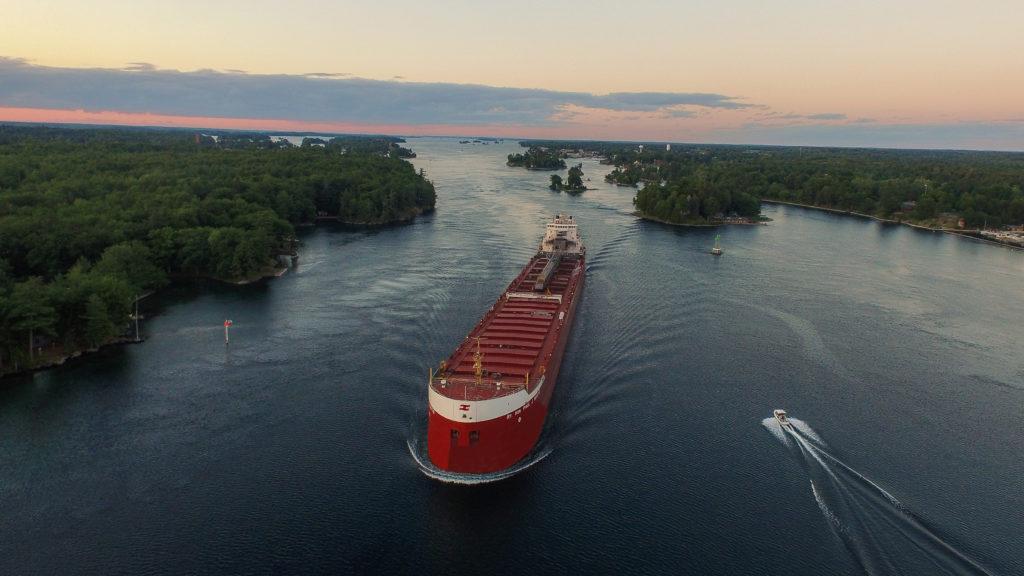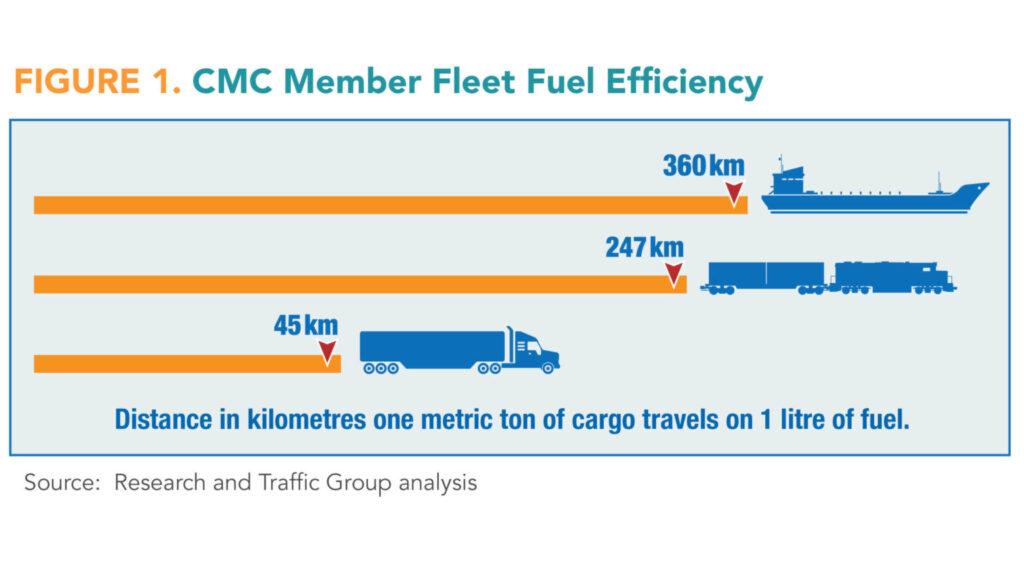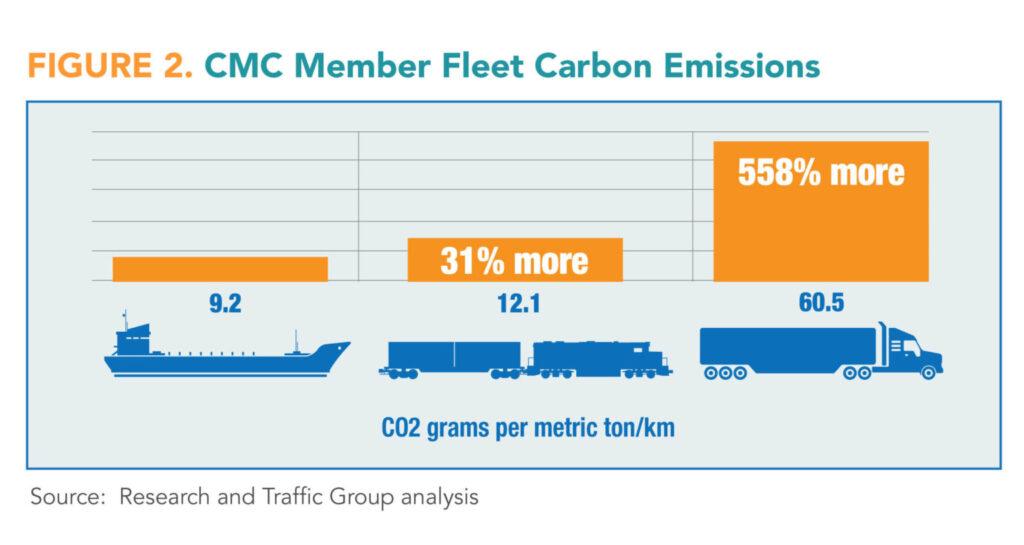
Ship operators have collectively decreased their greenhouse gas emissions by more than 30 per cent and are continuing to adopt a host of new technologies to decrease their carbon footprint even further.
Ship operators in Canada have collectively decreased their greenhouse gas emissions by more than 30 per cent since 2005. These reductions align with Canada’s targets to reduce GHGs by 30 per cent by 2030 from 2005 levels and the industry is continuing to adopt a host of new technologies, fuels and ship designs to decrease their carbon footprint even further.
“Because marine shipping is already the most carbon efficient mode of transport, and becoming more efficient all the time, it is an important part of the solution to climate change,” says Bruce Burrows, President and CEO of the Chamber of Marine Commerce. “There is great opportunity to move more goods by ship on our inland and coastal waterways and reduce the country’s overall greenhouse gas emissions.”
In Canada, the latest emissions inventory published in 2019, using 2017 data, indicates Canadian ship operators account for only 0.61 per cent of Canada’s national CO2 emissions (compared to 0.87 per cent back in 2005). Ships are also able to carry huge volumes of cargo on significantly less fuel than rail and trucks. One ship can carry as much cargo as 963 trucks.
On average, CMC’s Canadian-flag fleet can carry one tonne of cargo an incredible 360 kilometres on one litre of fuel. Recent analysis by Research and Traffic Group also shows that due to that fuel efficiency, if rail and truck were to carry the same cargo over the same distance as CMC’s fleet, there would be 31 per cent more GHG emissions from rail and 558 per cent more from trucking.


“Our Canadian shipowner members have been trailblazers in tackling greenhouse gases through programs like Green Marine and adopting new technologies,” Burrows explains. “Canadian shipowners have spent more than $2 billion during the past few years on new vessels and advanced technologies that significantly reduce fuel consumption and corresponding carbon emissions. The level of investment and innovation is really unprecedented. There are already more than 40 new and revamped Canadian-flag ships sailing these waters.”
St. Catharines-based Algoma Central Corporation, for example, has invested significantly in fleet renewal, building eight new environmentally efficient Great Lakes vessels to date and with additional new builds presently under construction. As a result of these investments and other improvements in vessel equipment and operations, that company is on track to meet its greenhouse gas reduction target.
Montreal-based CSL Group has utilized many different technologies and programs to reduce GHG over the years, including fleet renewal programs with six new Great Lakes vessels in Canada, extensive energy efficiency design and retrofit upgrades. Most recently, CSL has retrofitted propeller boss fin caps to vessels, which reduces the amount of power required to propel the ship forward and has had impressive fuel saving results. CSL has also undertaken biofuel trials in its Canadian division. The trials commenced with a B50 product, which is a fuel with 50 per cent bio content made from waste agriculture material. The trial used the new fuel on the generators of the vessel with successful results and will progress to a B100, 100 per cent bio-content fuel this coming season. Additionally, the B50 will be trialed on the main engine of two vessels in 2020 in the Great Lakes.
“This biofuel trial is part of CSL’s strategy for a holistic solution to air emissions, not just meeting the compliance obligations of Sulphur 2020 or NOx independently but rather taking a big picture view in reducing greenhouse gas emissions,” says Nathalie Sykora, Senior Vice-President, Global Operations.
Since 2007, Quebec City-based Groupe Desgagnés has invested more than $50 million per year to renew its fleet with more efficient vessels in all its trades. This includes a large investment in Dual-Fuel LNG vessels to reduce its SOx, NOx and GHG emissions. In the last two years, the company has introduced five new Dual-Fuel Tankers that are significantly reducing GHG emissions.
“As we were first adopters, many issues emerged, including the lack of delivery structures and network, so we had to innovate and invest a lot of effort in this technological development,” says Daniel Coté, Environmental Advisor for Transport Desgagnés.
Desgagnés has also undertaken energy audits on nine of its vessels to identify improved operational measures and reduction projects for better efficiency. Last year, it implemented a list of those operational measures on all its vessels to increase efficiency and reduce of GHG emissions. Over the next five years, the company will continue to implement new measures as part of its goal to decrease its GHG emissions by 2 per cent in intensity each year.
The global maritime transport industry has submitted a proposal to the United Nations’ International Maritime Organization to form the world’s first collaborative shipping R&D programme to help eliminate CO2 emissions from international shipping. The proposal includes a fuel levy to create core funding from shipping companies across the world of about USD $5 billion over a 10-year period.
The IMO has a goal to reduce global marine shipping’s greenhouse gas (GHG) emissions by at least 50 per cent by 2050, regardless of trade growth. The 2050 target will require a carbon efficiency improvement of up to 90 per cent, and the further development and deployment of new zero-carbon technologies and propulsion systems, such as green hydrogen and ammonia, fuel cells, batteries and synthetic fuels produced from renewable energy sources.